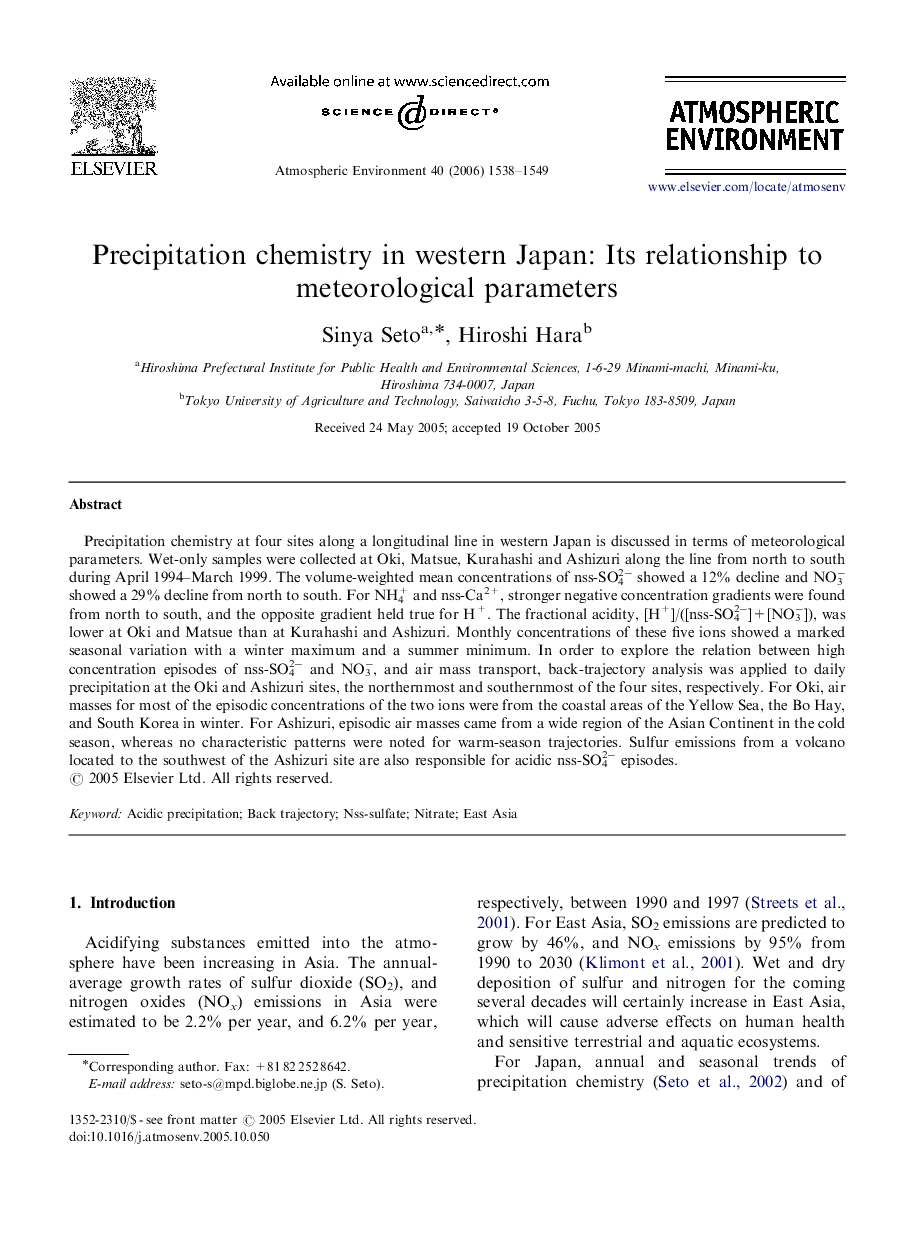| Article ID | Journal | Published Year | Pages | File Type |
|---|---|---|---|---|
| 4444657 | Atmospheric Environment | 2006 | 12 Pages |
Precipitation chemistry at four sites along a longitudinal line in western Japan is discussed in terms of meteorological parameters. Wet-only samples were collected at Oki, Matsue, Kurahashi and Ashizuri along the line from north to south during April 1994–March 1999. The volume-weighted mean concentrations of nss-SO42− showed a 12% decline and NO3− showed a 29% decline from north to south. For NH4+ and nss-Ca2+, stronger negative concentration gradients were found from north to south, and the opposite gradient held true for H+. The fractional acidity, [H+]/([nss-SO42−]+[NO3−]), was lower at Oki and Matsue than at Kurahashi and Ashizuri. Monthly concentrations of these five ions showed a marked seasonal variation with a winter maximum and a summer minimum. In order to explore the relation between high concentration episodes of nss-SO42− and NO3−, and air mass transport, back-trajectory analysis was applied to daily precipitation at the Oki and Ashizuri sites, the northernmost and southernmost of the four sites, respectively. For Oki, air masses for most of the episodic concentrations of the two ions were from the coastal areas of the Yellow Sea, the Bo Hay, and South Korea in winter. For Ashizuri, episodic air masses came from a wide region of the Asian Continent in the cold season, whereas no characteristic patterns were noted for warm-season trajectories. Sulfur emissions from a volcano located to the southwest of the Ashizuri site are also responsible for acidic nss-SO42− episodes.
